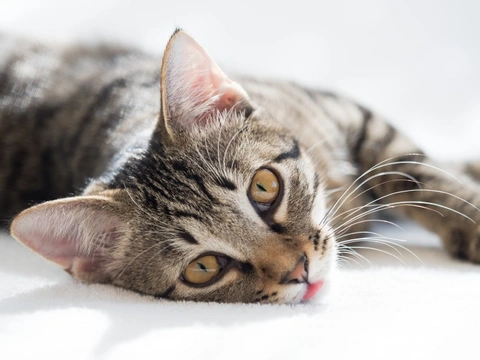
Coagulopathy in Cats (Liver Related)
Coagulopathy is a condition that negatively impacts a cat's liver and it can be caused by many things. The liver is a vital organ and its role is to synthesize certain essential proteins among other things. Should a cat's liver not be able to function correctly and this results in clotting problems, it is a serious situation that can sometimes prove fatal if cats are not treated immediately. As such, any cat suspected of suffering from coagulopathy needs to be examined by a vet sooner rather than later.
Signs to Watch Out For
When a cat suffers from coagulopathy of the liver, there are certain signs to watch out for that there is something very wrong and this could include the following symptoms:
- Faeces are black because they contain digested blood
- Faeces contain red blood
- Vomiting up blood or spitting up blood
- Blood in urine
- Prolonged bleeding
The Causes
As previously mentioned, there are several reasons why a cat might suffer from coagulopathy and this could include the following health issues:
- Liver failure - severe
- Liver disease - acute viral
- Cirrhosis of the liver
- Extrahepatic bile duct obstruction - also referred to as EHBDO
- A vitamin K deficiency which can be linked to a severe blockage of bile ducts or a condition known as steatorrhea
- Portosystemic vascular anomaly - also referred to as PSVA
Diagnosing the Problem
A vet would need to have a cat's full medical history and ideally be told how the symptoms first manifested themselves which would help confirm a diagnosis. The vet would thoroughly examine a cat suspected of suffering from coagulopathy and would typically recommend carrying out the following tests:
- A biochemistry profile
- A complete blood count
- An electrolyte panel
- A urinalysis
- X-rays - these would show up any abnormalities in a cat's abdomen
A vet would also typically carry out haemstatic tests to establish specific clotting times.
Treatment Options
Unless a cat is suffering very severe haemorrhaging, a vet would not need to carry out any sort of invasive procedure to correct the problem. Should a cat have lost a lot of blood, they would need to be hospitalised so they can be closely monitored and given blood transfusions. However, the vet would need to establish the underlying cause of the problem and treat this to prevent the problem from recurring.
Living with a Cat with Coagulopathy
Once a cat has been allowed home after having been successfully treated for the condition, the vet would typically recommend putting them on a well-balanced, vitamin rich diet which would aid a speedy recovery. Supportive care is all-important and cats need to be kept in a quiet environment until they have fully recovered. Should a cat start to show any symptoms of suffering from coagulopathy again, they would need to be taken to the vet as soon as possible so further tests can be carried out to identify why the condition has recurred.



